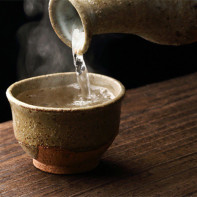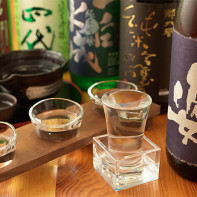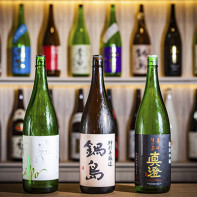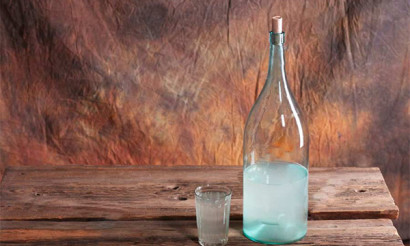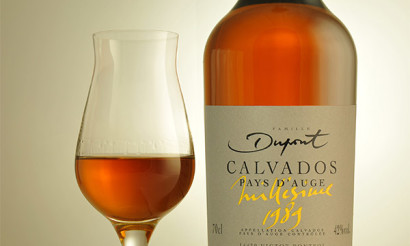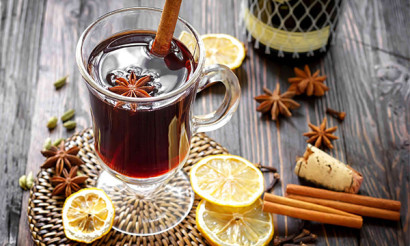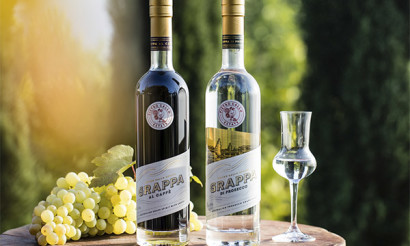How to drink sake
The sake is made from rice. And contrary to a widespread misconception, it is not strong, the alcohol in it is only 18–20 degrees. So this is not vodka at all, as many believe. By fortress, it is closer to wine or beer, and its consistency is similar to a liquor. The color of sake is golden, soft yellow, sometimes amber, and its taste is subtly reminiscent of sherry, in addition, it contains notes of fruit. The aftertaste of the best varieties reminds of ripened expensive cheese, mushrooms or even soy sauce.
- What is sake
- Views
- Composition and calorie content
- How to drink sake
- What are they drinking from?
- What to eat
- What to drink
- Why do sake drink warm
- The benefits and harms of sake
- Sake cocktails: recipes
- Sake Bomb
- Geisha with tomato juice
- Zen
- "Last breath"
- "Sunny Sake"
- "On the moon"
- Hot Sake
- Nozomi
- Raspberry Sake
- Japanese daiquiri
- How to make sake at home
- Interesting Facts
What is sake
Make a drink of rice with the addition of rice malt. The production technology is based on mold fermentation. The essence of the process is as follows: a wort made from rice of strictly defined varieties is fermented using koji mold and yeast. Currently, about 60 varieties of rice are used, each of which contains a large amount of starch. The most preferred are varieties such as Yamadanisiki, grown on plantations in Hyogo Prefecture, and Omachi, originally from Okayama. The quality of the drink depends on the degree of polishing of the rice.

Of great importance for sake is the water used for its manufacture. A drink made on the basis of soft, and comes out softer, lighter, feminine. More dense, saturated sake is obtained from hard water. In addition, it should contain phosphorus, calcium, potassium and magnesium, but the presence of iron and manganese is not allowed. Basically, water is taken from several springs.
Sake production technology includes several stages:
- On the first rice is subjected to grinding, which removes bran, thereby freeing from proteins and fats, giving the finished drink not very pleasant notes - both in taste and in smell. Grain can be machined up to 65%.
- Next, the rice is washed, soaked for several hours, and the soaking period depends on the degree to which the grain is polished - the stronger, the less time. After the rice is steamed. This is an important point, since steamed rice is overcooked, as a result of fermentation is too fast, so the drink does not have time to fully gain flavor. Undercooked rice does not roam its entire thickness, but only on the surface.
- The next step is the preparation of the dash with koji mushroom. This is the most critical part of the process. Mold fungus is added to rice and left for one and a half to two days in a warm place with high humidity. The process is often monitored - every 3-4 hours.
- Next, the resulting dough is mixed with rice, added water, yeast is added, and the mixture costs from a crescent to a month, turning into alcohol. Gradually, during the first four days, rice and water are added to it in three stages. This multi-step process is needed to provide the necessary ratio of koji to yeast. And only then the rest period is suitable for the drink.
- At the end of the fermentation period, the liquid is filtered and divided into pure sake and a white precipitate. Then the liquid is cleaned by passing it through an activated carbon filter. Thus, unnecessary odors are eliminated, but the color is also somewhat muffled.
- The final stage is aging, during which the sake is first pasteurized in order to destroy bacteria and yeast, and then placed in hermetically sealed containers for a period of six months to a year.
The result is a drink with a strength of about 18-20 degrees, but often, before pouring, it is diluted with water to get 15 degrees.
Sake does not tolerate light and high temperature, so it must be stored in cool and dark.The best place for him is a refrigerator, and even on the door he does not feel very well, preferring the depth of the shelves.
Views
The classification of a Japanese alcoholic beverage is based on two of the most important attributes. The first is an indicator of polishing rice, the second is the method by which fermentation is stopped: by itself or by adding alcohol. The names of drinks, on their own, without alcohol, ending the fermentation, usually have the word "Junmai" (or "Junmai").
- So, the Junmai variety (or Junmai) - this sake is absolutely pure, without additives. No alcohol was added to it, no sugar or starch was added. Basically only rice with a degree of polishing from 90 to 70%. The aroma is light floral, such sake is usually served either cool - at a temperature of 15 and 20 degrees, or warmed up to 40 degrees.
- Futsushu - a drink with the addition of alcohol, based on rice with a minimum of 90% polishing, during which only the upper protein layer that inhibits fermentation is removed. This is the most common type; it occupies three quarters of the total production volume. But in essence this is an ordinary good table wine, similar to European, with a bright aroma and memorable taste, but without any special, distinctly expressed solo notes. They serve it both chilled to a temperature of 5 or 10 degrees, and heated to 50.
- Honjozzo - for its production, rice is ground to 70% and a little purified alcohol (or pure alcohol) is added to soften the taste and highlight aromas. As a result, the taste is slightly tart, but light. Serving it is recommended at 5, 10 degrees or heating to 50. This type of sake is more expensive than the rest.
- Junmai ginze - in the manufacture of this type of sake, not only rice with a grinding degree of 60% is used, but also floral yeast. As a result, the product wanders at a fairly low temperature. It turns out quite a soft aromatic drink, in which the notes of nuts, flowers, fruits, herbs are clearly soloed. Drink it chilled to 10 degrees.
- Ginze - sake from rice polished up to 60–70%, fermentation is stopped by adding alcohol. The aroma is very similar to Junmai Ginze, but more sharp in taste. Serve to the table, cooling to 10 degrees.
- Junmai Daigindze - to make this sake, rice of a high level of grinding is taken - 50% or more, sometimes even up to 23 and 10%, alcohol is not added. The aroma is bright, well defined, at the same time subtle and unobtrusive, the taste is exquisite and memorable. It is served both cooled down to 10 degrees and warm, however, when heated, a thin smell disappears.
- Daigindze - sake of the highest grade, for its production take polished rice up to 50% of the best and most valuable varieties - miyamanisiki, yamadanisiki or gohyakumangoku. It is similar to the colleague Junmai Daiginze, but due to the added alcohol it is more saturated. Do not heat up before drinking, consume cold or at room temperature.
- Genmai - refers to expensive varieties, brown unpolished rice is used for its production. It is characterized by a deep velvety taste and a rich aroma of almonds and lime, and in the aftertaste notes of caramel with juniper are felt. It is drunk only after cooling to 5 degrees.
- Tokutei meisesu - is considered an elite drink, the best of all sorts of Japanese alcohol, positioned as a premium product. Only experienced skilled craftsmen can absorb it, having absorbed the knowledge and skills gathered by their predecessors over the centuries. This type of sake is not only excellent quality, but also the content of high levels of alcohol.
Moreover, sake is divided into unfiltered and filtered, unpasteurized and pasteurized.
Unfiltered (or nigori in another way), as a rule, is made either Futsushu or Junmai, the rest are usually filtered. Unfiltered is recommended to drink chilled, because when it is warm, it begins to bitter and loses all its original flavor.
Unpasteurized (or namachoso) is also better not to warm for a reason, so as not to lose its flavor.
Composition and calorie content
Sake is a product in which there is no fat at all. Carbohydrates in 100 g of the drink is almost 5 g, proteins - 0.5 g. Calorie content for the indicated mass is 134 kcal or 6.7% of the daily norm in 2000 kcal. Ethyl alcohol contained 16.1 g.
Trace elements in the drink a rich set. There is calcium and phosphorus necessary for hair, nails and bone skeleton; providing normal heart function potassium; participating in the processes of blood formation, iron, as well as sodium, involved in the work of the blood supply system. In addition, sake contains magnesium, known for its ability to calm the nervous system; responsible for metabolic processes zinc; copper involved in the circulatory and excretory systems of the human body; as well as antioxidant selenium.
How to drink sake
In Japan, national traditions and rituals are highly respected; in their observance, they lay a deep meaning. And this rule also applies to drinking sake. On New Year's sake, they are going to January 1. There is a special funeral sake, and there is a special order for wedding ceremonies.
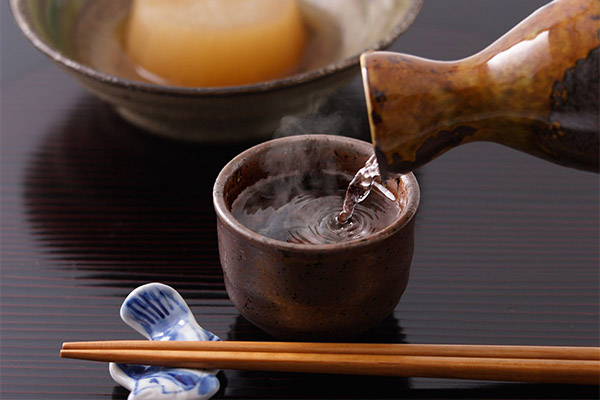
The Japanese consider the height of indecency to pour alcohol on their own. The host usually pours the drink to the guests, and to him - the person sitting next to him. A jug with a drink must be held with both hands, for the right to fill with one hand is vested only in one whose status is higher than the one to whom they pour. If the person fills the cup with a higher position, the guest should not only hold it in weight with his right hand, but also put the palm of the other hand under the bottom.
When the jug went around in a circle without missing a single cup, they were raised to eye level and amicably said: “Kanpai!” During the subsequent contact with the cups, the tradition reappears: you must not raise your capacity higher than a clinking high-ranking guest.
"Kanpai" means "to the bottom", but it does not mean anything. In one gulp, one or two sips to empty the dishes is not accepted. It is only necessary to take a sip, in extreme cases - two. That is why the ritual of drinking sake lasts a long time.
The back should be held straight during the sake ceremony: proper posture is another part of the ritual. And if intoxication suddenly catches up, you immediately need to relax, do not panic and do not shade, straighten your back and perform a long song.
During large festive feasts, a circular cup ceremony is often performed. He who leads the feast pours sake into a large bowl, takes a sip of it and sends it in a circle. After this ritual, the feast continues.
What are they drinking from?
Sake is served in small jugs of porcelain or ceramics called tokkuri. They are round, with a narrow neck resembling vases. It is also possible to serve the drink in dishes similar to a miniature teapot - these are katakuchi.
The jug is brought in and put on the table on a special stand made of ceramics, the Japanese call it Tokkuri-Hakama.
And they drink an alcoholic drink from small cups called choco and made of clay, wood or glass. The cups are a bit like small bowls. At formal events, sake is most often served in flat bowls called sakazuki.
Sometimes, tiny, only 30–40 ml, square boxes of cadules called masu are brought to the feast. Usually they measure the amount of rice, but you can also pour sake in them and drink according to all Japanese rules.
But today, not everyone adheres to traditions, so it is quite realistic to see the presentation in a wine glass, and this does not surprise anyone.
What to eat
Many still consider sake to be exotic, so they suggest that it should be eaten with special, specific products and dishes.
Since this drink is recommended as an aperitif and digestif, it can be avoided at all. But there are a number of products that can shade the taste of sake and make it more harmonious.
It is strongly not recommended to accompany sake with spicy spicy sauces and dishes: they overshadow the characteristic taste of the drink and its aroma. In general, the quality of alcohol dictates a list of acceptable foods and dishes for it, and the more expensive it is, the more stringent are the requirements for snacks.
So, Honjozzo goes well with traditional Japanese sushi, sashimi (thin plates of fish), teriyaki sauce. Daiginze ranks as a more expensive drink, and duck, lamb or sashimi harmonize with it. The Genmai variety, which occupies an even higher price niche, is served with expensive dark chocolate, gourmet hard cheeses and Japanese tempura.
As an appetizer, sake is recommended, in addition, pickled and pickled vegetables - the water lotus root, daikon, - herring caviar, oysters, as well as dishes from eel, tuna, squid, sea urchin. They are a good background for the Japanese drink, on which it looks advantageous. Salads, desserts and even soups are not forbidden.
What to drink
In Japanese tradition, it is not customary to drink sake. But it is included in cocktails, and the result is very good.
Why do sake drink warm
In fact, sake before use can not only be heated to 50-60 degrees, but also cooled to 5 or 10. A warm drink or a chilled one is determined both by the quality of the drink and the desire of the drinker.
Initially, there was a rule: only sake is high-grade, dear, to drink cold. But it is necessary to heat the one that is cheaper and the quality is worse, because with increasing temperature the smell and taste of the drink disappear - until it disappears completely. If expensive varieties such as Ginze and Junmai Ginze, distinguished by bright notes of aromas and original accents of tastes, lose these advantages, it will be frankly a pity. A cheap option - for example, Futsushu - will suffer slightly, rather, it will become better. This is because heating will remove the essential oils that have been converted to alcohol from under-processed rice, which was its base. Sake will only benefit from this. And in cold weather, a few sips of a warm, warming drink - this, as they say, is what the doctor ordered.
It is easy to heat the sake: you need to hold the tokkuri for several minutes in a pan with hot water.
The Japanese have so determined the degree of heating of sake: 30 degrees - solar; 35 degrees - human heat (or human skin); 40 degrees - barely warm; 45 degrees - warm; 50 degrees - hotter; 55 degrees - burning (or extra).
The benefits and harms of sake
The scientists of the Land of the Rising Sun studied the traditional national drink thoroughly. Their conclusion is unequivocal: sake is good for the body - provided that you drink it in moderation. Subject to the “Moderation and Accuracy” rule, this alcohol helps to normalize blood pressure, significantly refreshes the memory and stimulates the activity of the heart and circulatory system. With its help they prevent the development of angina pectoris and heart attacks, delay the onset of tumors - both benign and malignant. This is a good tool for the prevention of cancer.
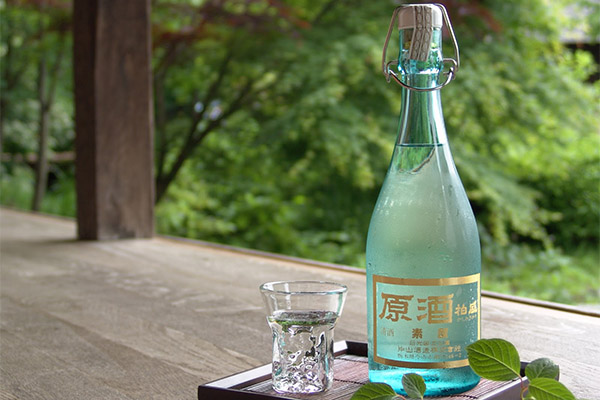
Thanks to the ingredients, sake has a disinfecting effect, compresses based on it achieve faster absorption of hematomas and hemorrhages. Subject to this drink and insomnia caused by chronic fatigue. But in order to establish sleep, one should not drink alcohol, but add it to the bath, which should be taken before going to bed. For a relaxing bath, just pour a small glass (200 ml) of sake into warm water.
Japanese women use this drink for cosmetic purposes to improve the condition of the skin by rubbing their face with it. As a result, the skin is lightened, cleansed, pores are narrowed, if there are placers of blackheads, their number decreases. The systematic use of sake tightens the skin, it noticeably softens.
The cooks season the drink with chicken, fish - it is especially important to add it during the preparation of puffer fish, known for its killer poison.
Despite the fact that sake is made from living natural products according to safe recipes and it does not contain harmful substances, we must not forget that it is still an alcoholic drink, so you can not drink it often and in large quantities. This will negatively affect the liver, worsening its condition - up to the development of cirrhosis.
For the same reason, sake is contraindicated in pregnant women and nursing mothers, as well as people under the age of 18.
You can not drink an alcoholic drink and those who, for health reasons, are forced to take medicine. Alcohol and drugs are incompatible, their combination can harm the body.
Sake cocktails: recipes
Sake Bomb
Pour 80 ml of sake into a shaker, prepare 30 ml of strawberry syrup. Moisten the edge of the glass with syrup, dip it in granulated sugar, and add the remaining syrup in sake. Stir the contents of the shaker thoroughly and carefully pour into a glass. String a couple of olives on a toothpick and put them in a smoothie.
It tastes like a real gastronomic bomb, it is not for nothing that the cocktail has such a name.
Geisha with tomato juice
First, mix in a small cup a drop of lemon juice with a drop of soy sauce and a little wasabi - taken literally on the tip of a knife. Add 90 ml of tomato juice to the mixture and pour into a shaker, where to add 40 ml of sake. Shake the mixture thoroughly and, pouring the cocktail into a glass, decorate it with a stem of celery and a slice of lime. Serve the drink chilled. It turns out refreshing, light, with a delicious piquant note.
Zen
Pour into a shaker 60 ml of quality vodka and sake, as well as 30 ml of green tea and 20 ml of freshly squeezed lemon juice. Shake with three to four ice cubes.
Pour the cocktail into vodka glasses or sake cups. It will appeal to those who do not seem very strong sake.
"Last breath"
Pour well-chilled alcoholic drinks into an ice-filled shaker: 90 ml sake, 70 ml Bianco vermouth and 25 ml banana liquor. Shake well for about a minute, strain and pour into a glass. This is a serving per person. Despite the fact that the strength of the cocktail is small, thanks to the volume it is able to knock down an inexperienced person in the libations.
"Sunny Sake"
Pour 40 ml of sake, 30 ml of peach juice, an incomplete spoon of lemon juice and 50 ml of apple juice into the shaker. Add cardamom on the tip of the spoon and a handful of ice cubes. Stir and strain, pour into a cocktail glass and serve with a straw. This cocktail is for those who like juices, soft drinks and avoid strong drinks.
"On the moon"
Mix 30 ml of Bianco vermouth in a glass with 80 ml of sake and a tablespoon of lemon juice. Put a slice of lemon on the edge of the glass. The taste of the cocktail is interesting, but not everyone will like the result of the “friendship” of vermouth and sake.
Hot Sake
In a shaker, mix 10 ml of amaretto liquor with 50 ml of sake. Pour into a glass, garnish with a leaf of basil and a few peas of black pepper. A cocktail for lovers of spicy and spicy tastes and aromas, in the aftertaste there are notes of almonds.
Nozomi
In a shaker, mix 30 ml of plum wine, 40 ml sake and a tablespoon of honey syrup with a small amount of ice. Pour into a glass, put a leaf of basil and send for 15-10 seconds in the microwave. A slightly heated drink will begin to give off the scent of plum and honey.
Despite the unusual method of preparation, the cocktail is very tasty.
Raspberry Sake
Pour 50 ml of raspberry syrup and 100 ml of sake into the shaker. Stir, pour into a glass with 3-4 ice cubes.
The drink will appeal to those who love experiments and raspberries in any form.
Japanese daiquiri
Put a handful of ice cubes in a shaker and pour in an incomplete tablespoon of sugar syrup and lemon juice, 90 ml of sake and 25 ml of melon liquor. Shake for 15-12 seconds, then strain the cocktail into a glass and garnish it with a piece of ginger.
How to make sake at home
For home-made sake, sticky and sticky rice is most suitable. Koji mold is also needed, and is used for its ability to convert starch in rice to fermentable sugar. If you cannot find such yeast, you can replace them with wine yeast, so that the fortress is higher, add sugar. Baker's yeast will not work: if you use them, instead of sake you get rice mash.
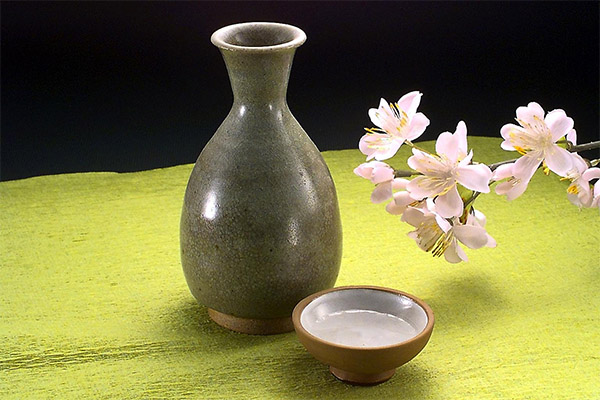
From 1 kg of rice will come from 6 to 8 liters of wort, taking this into account, you need to stock up on yeast by reading their consumption on the package. Later, sugar will still be needed - it will make the drink stronger and sweeter.
Rinse the rice in several waters so that the turbidity disappears and pour boiling water in the pan so that it covers the cereal with a layer of about 3 centimeters. Cover the pan and set aside for an hour, then filter the water with a sieve.
Next, cook rice for a couple for 25-30 minutes, while the grains should be loosely covered with a lid. When the rice becomes soft and slightly sweet, put the product on a baking sheet or tray in an even layer, wait until it cools completely and spread the yeast evenly over its entire area. Stir rice with yeast.
Next, transfer the rice-yeast mixture into a glass jar and close it by making a water seal from the tube, which is removed in the next jar of water. Stand this composition for a month in a warm room at a temperature of at least 22 degrees. The wort will begin to slowly but noticeably exfoliate.
After a month, separate the rice from the liquid, strain the wort and squeeze it well. The grain is no longer useful, it can be thrown away.
The resulting liquid is already a young sake. But still he still has a second stage of cooking. It is necessary to add sugar at a rate of 120 g per 1 liter and again send to a jar with a water seal. The drink should stand for another 5 to 15 days - until it ferments. The sake that has finished fermentation becomes light, gas is no longer released from it. A precipitate forms at the bottom of the can.
Gently, through the tube, drain the liquid without sediment into another container. If there is not enough sweets, you can still add sugar, this is already for everybody. Pour the finished drink into glass bottles and seal tightly.
If sake was prepared on the basis of koji fungus, it is necessary to pasteurize the drink in order to kill the fungus; this step is not required for wine yeast.
For pasteurization, you will need a large pan, on the bottom of which you can install a wooden grid or put a cotton cloth rolled up in several layers (you can use a towel). In the center, put a jar filled with water, into which to lower the thermometer, arrange bottles around, fill the pan with water and start heating it. When it reaches a temperature of 62–63 degrees, carefully monitor that the thermometer does not rise above the column, otherwise the sake will get a boiled flavor.
The duration of pasteurization is directly dependent on the volume of the bottle: half a liter is enough for 20 minutes, for those with a capacity of 0.7 l - 5 minutes longer, liter pasteurize for half an hour.
Turn off the gas, leave the bottles to cool directly in the water. When its temperature drops to 35–40 degrees, remove the bottles. The closure density can be checked by turning the bottle upside down.
The drink should finally mature in the cellar for three months at a temperature of no higher than 12 degrees.
Interesting Facts
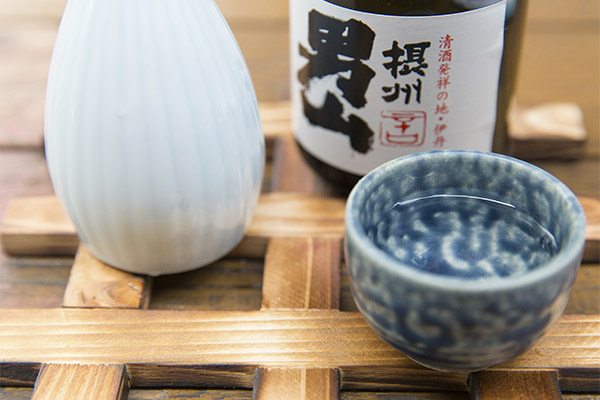
- The Japanese learned to make sake almost two thousand years ago. For hundreds of years, it was accessible only to the imperial palace and Shinto churches, but later - in the Middle Ages - they learned to cook it in village communities. The technology of those years was very peculiar: rice was chewed and spat on the dishes, in which the fermentation process then passed. The koji mold was found later.
- From the 17th century, sake began to be prepared in large quantities - for trade. The center where the main production of sake was concentrated was the Kinki district (the prefectures of Osaka, Kyoto, Osaka, Hyogo and Nara are now located on this territory).
- During fermentation, fungi are used that are different from those that make wine, because of them the drink cannot be stored for a long time. Even a year for sake is a risky period. Therefore, there is no sake of long exposure.
- Once the Japanese emperor Saga went on a winter hunt, where he became ill, began to shiver.Minister Fujiwara Fuyutsugu, who made up the company to the emperor, decided to heat the sake, after which he gave the drink to the sick. That chill disappeared, he felt much better. This was the first drink of heated sake. Since then, drinking a cup of hot sake in cold winter weather has become a tradition among the Japanese.
- Until the 40s of the last century in Japan, sake production went uphill, but with the beginning of World War II, most factories were closed. Once again, production has revived only since the 70s, but the main emphasis was on premium drinks. This happened because the producers learned new methods of rice processing - mechanized. And the stage that used to be the most labor-intensive has become more accessible.
- Today, there are about a thousand sake factories in the Land of the Rising Sun, which is meager compared to the times when the drink was at the top of popularity. Then there were about 30 thousand factories.
- In Japan, they drink much less sake than in North America or Europe. The Japanese are generally a low-drinker nation. The expression "lick like a pig" means they take more than three small cups of sake in one evening.
«Important: all information on the site is provided exclusively in fact-finding purposes. Before applying any recommendations, consult with a profile specialist. Neither the editors nor the authors are liable for any possible harm caused materials. "


